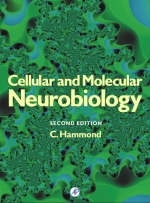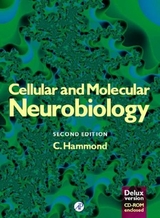
Cellular and Molecular Neurobiology
Academic Press Inc (Verlag)
978-0-12-322040-0 (ISBN)
- Titel erscheint in neuer Auflage
- Artikel merken
Cellular and Molecular Neurobiology introduces a novel approach to learning and teaching neuroscience. The molecular aspects of ionic channels (voltage and ligand-dependent channels) are clearly explained from a functional view point and with an hypothesis-driven approach firmly based on experiments. Once each channel is explained, it is summed up one-to-one to arrive at the explanation of the basic properties of excitable cells and secretory cells; action potentials, sensory receptor potentials, statistics of transmitter release and synaptic potentials. This building block approach to illustrate the functions of the neuronal plasma membrane also facilitates the explanation of more complex neuronal behaviors.
With the aid of over 400 illustrations reconstructed from classical experiments, the chapters are organized to encourage students to ask questions in the face of an observation, to formulate hypotheses, to design experiments to test these hypotheses, and to draw critical conclusions from the results obtained. As a result, it is a book from which students like to learn.
Constance Hammond is an INSERM director of research at the Mediterranean Institute of Neurobiology. A renowned Parkinson's disease investigator, in 2012 she became a Chevalier of the Légion d'Honneur in recognition for her services to scientific communication. Studying biology at the University of Pierre and Marie Curie and the Ecole Normale Supérieure in Paris she completed her thesis in neurosciences at the Marey Institute in Paris, directed by Prof. D. Albe-Fessard. Guided by her curiosity and her constant desire to learn, she changed lab and research domains several times. With the knowledge of other systems and the mastering of other techniques she finally came back to her first and preferred subject of research; the role of the subthalamic nucleus in the basal ganglia system in health and Parkinson's disease.
General Properties of Neurons in the Nervous Tissue: C. Hammond, Neurons.
C. Hammond, The Chemical Synapses.
C. Hammond, Glial Cells.
C. Hammond, The Nervous Tissue.
Neurons are Excitable and Secretory Cells:
C. Hammond, The Neuronal Plasma Membrane.
A. Nistri and A. Gutman, Basic Properties of Excitable Cells at Rest.
C. Hammond, The Voltage-Gated Channels of Action Potentials.
C. Hammond, Neurotransmitter Release.
Ionotropic Receptors in Synaptic Transmission and Sensory Transduction:
C. Hammond, The Nicotinic Acetylcholine Receptor.
C. Hammond, The GABA Receptor.
C. Hammond, The Ionotropic Glutamate Receptors.
C. Bourque, Ionotropic Mechanoreceptors: The Mechanosensitive Channels.
Metabotropic Receptors in Synaptic Transmission and Sensory Transduction:
D. Mott, The GABAB Receptor.
R.W. Gereau and P.J. Conn, The Metabotropic Glutamate Receptors.
C. Hammond, The Olfactory Receptors.
Integration of Post-synaptic Currents and Synaptic Plasticity:
C. Hammond, The Integration of Synaptic Currents.
C. Hammond, Subliminal Voltage-Gated Currents.
C. Hammond, Firing Patterns of Neurons.
C. Hammond, Synaptic Plasticity.
Subject Index.
| Erscheint lt. Verlag | 20.9.1996 |
|---|---|
| Verlagsort | San Diego |
| Sprache | englisch |
| Maße | 203 x 254 mm |
| Gewicht | 1170 g |
| Themenwelt | Naturwissenschaften ► Biologie ► Humanbiologie |
| Naturwissenschaften ► Biologie ► Zellbiologie | |
| Naturwissenschaften ► Biologie ► Zoologie | |
| ISBN-10 | 0-12-322040-8 / 0123220408 |
| ISBN-13 | 978-0-12-322040-0 / 9780123220400 |
| Zustand | Neuware |
| Haben Sie eine Frage zum Produkt? |
aus dem Bereich



